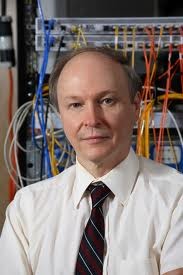- unknown (b.)
Bio/Description
Along with his wife Sandy Lerner, he is a co-founder of Cisco Systems, an American-based multinational corporation that designs and sells consumer electronics, networking and communications technology and services. He was awarded the Computer Entrepreneur Award in 2009 for this and for pioneering and advancing the commercialization of routing technology and the profound changes this technology enabled in the computer industry. He is largely responsible for pioneering the widespread commercialization of local area network (LAN) technology to connect geographically disparate computers over a multiprotocol router system, which was unheard of technology at the time. In 1990, Cisco's management fired his wife Sandy Lerner, and he resigned. He is currently the CEO of XKL LLC, a privately funded engineering company which explores and develops optical networks for data communications.
Born in Pennsylvania in 1952, graduated from the Wharton School at the University of Pennsylvania in 1973, and joined DEC as a hardware engineer. In 1979 he was accepted into Stanford University, and began to study computer science. During his time at Stanford, he was credited for becoming a support engineer for a 1981 project to connect all of Stanford's mainframes, minis, LISP machines and Altos. His contribution was to work on the network router that allowed the computer network under his management to share data from the Computer Science Lab with the Business School's network. In 1984, he co-founded Cisco with the aim of commercializing the Advanced Gateway Server, a revised version of the Stanford router built by William Yeager and Andy Bechtolsheim. He and Lerner designed and built routers in their house and experimented using Stanford's network. Initially, he and Lerner went to Stanford with a proposition to start building and selling the routers, but the school refused. It was then that they founded their own company and named it "Cisco," taken from the name of the city to the north. Cisco's product was developed in their garage and was sold beginning in 1986 by word of mouth. In their first month alone, Cisco was able to land contracts worth more than $200,000. The company produced revolutionary technology such as the first multiport router-specific line cards and sophisticated routing protocols, giving them domination over the market-place. Cisco went public in 1990, the same year that he resigned. He and his wife walked away from Cisco with $170 million after being forced out by the professional managers the firm's venture capitalists brought in. In 1996, Cisco's revenues amounted to $5.4 billion, making it one of Silicon Valley's biggest success stories. In 1998, the company was valued at over 6 billion and controlled over three quarters of the router business.
He has also held significant technical leadership roles at AT&T Bell Labs, and Digital Equipment Corporation. After earning his Masters Degree in computer science from Stanford University, he became Director of Computer Facilities for the university's Department of Computer Science. He became a key contributor to the emerging network technology driven by the U.S. Department of Defense (ARPAnet) which was the beginning of today's Internet. His most recent technological advancements include his creation of new in-line fiber optic amplification systems that are capable of achieving unprecedented data transmission latency speeds of 6.071 milliseconds (fiber plus equipment latency) over 1231 kilometers of fiber, which is roughly the distance between Chicago and New York City. He was inspired by his belief that by leveraging the inherent, but often untapped, physics of fiber optic components, data transmission speeds can be increased with devices that use less power, less space and require less cooling.
-
Gender:
Male -
Noted For:
He pioneered the commercialization of routing technology and the profound changes this technology enabled in the computer industry -
Category of Achievement:
-
More Info:


